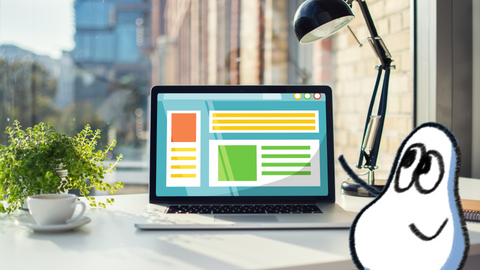You’ve aced your presentation. The audience is hanging on your every word, even as you come to the end of your topic.
Now is not the time to spoil things with a weak “Any questions” and the awkward silence that could follow.
Unless you’ve worked some audience interaction in throughout your talk (and it’s gone well), there’s no surer way to summon the tumbleweed than a last minute request for their input.
So what do you do?
Well, you could ensure you include interaction throughout your talk (it’s a really powerful way to keep them engaged). But if you haven’t done that, for whatever reason (it’s not ‘that kind’ of talk, you didn’t have enough time, you haven’t read this article about how to be an engaging speaker), there is another way!
Stick with us and we’ll share Steve Rawling’s (Author of Storyteller Tactics) top tip for getting those questions rolling in. These apply whether it's a small presentation with your colleagues, or a bigger professional event with an audience of strangers.
Why do Q&As so often fall flat?
We have all been in a business presentation or talk where the speaker says "Any questions?" and the tumbleweed rolls on by.
One reason that Q&As are such a hard thing to nail is that they are a complete switch in the dynamics. Whether your talk was a minute long or an hour, your audience (hopefully) tuned in, forgot about themselves and listened. The spotlight is, rightfully, on you.
But all of a sudden - it’s on them.
They haven’t had time to prepare their thoughts and questions.
But you can introduce elements at the end of your presentation that will help get them ready.
Are Q&As really important?
You don’t always need to ask for questions, but it’s very engaging and informative for your audience, so if possible, try it!
Q&As usually happen right at the end of a talk, so recency bias means they are the section of your talk that most people will remember most clearly. They are important, and they can be fun.
And if you’re nervous about this type of thing, we’ve got some tips for anxious presenters that might help you reframe your nerves as excitement.
How to get those questions flowing
Steve’s top tip is to let the audience know that you’ll be asking for their questions in a few minutes - and then invite them to have a chat with the person next to them for 30 seconds to two minutes first. This helps them to warm their brain up, test out their question and prepare themselves - and you’ll see the difference it makes. Questions will start rolling in.
If you’re online, you can mitigate the awkward silence by asking people to send in their questions via the chat during the talk, too - pause and remind them of this a couple of times if it feels natural.
You can also tee up the questions, particularly if your talk has been quite long, by reminding the audience of the topics: “Perhaps you’d like to know more about the scientific process we used to discover this, or the way that other organisations might use our findings?”
Why are Q&As so difficult for speakers? And what can you do about it?
The Q&A session represents the great unknown. People could ask you anything! There are so many risks:
- What if they ask you something you don’t know, or forget the answer to? Will you look stupid?
- What if they ask a dumb question because they didn’t understand? Will you inadvertently make them look stupid?
- What if they know more than you, or ask you something controversial?
But those risks can all be mitigated with preparation. You can even share your talk with a friend or colleague to see what they might ask (extra points if they come along and ask one of those questions!).
Here are a few things to think about ahead of time:
- How will you answer questions you don’t know the answer to? A simple “Great question, and I actually can’t answer that. If you find me/contact me after this session, I can get back to you.”
- What if they have misunderstood? Don’t panic! Just work out what the last point that they did understand was - you can always ask them a question to clarify their understanding - and then explain it graciously from there.
- What if they ask you something controversial? You can either prepare answers in advance for controversial questions, or - if it’s one you weren’t expecting - plan to take a moment to think. You can say “Let me think about that…” and then either answer, or if you think it would be more professional, let them know it’s outside of your remit to discuss that here, but you’d be happy to chat after your session.
Questions show that people have listened to you, found you interesting and want to learn more - and are even prepared to speak up in front of others to do so. Embrace them!








